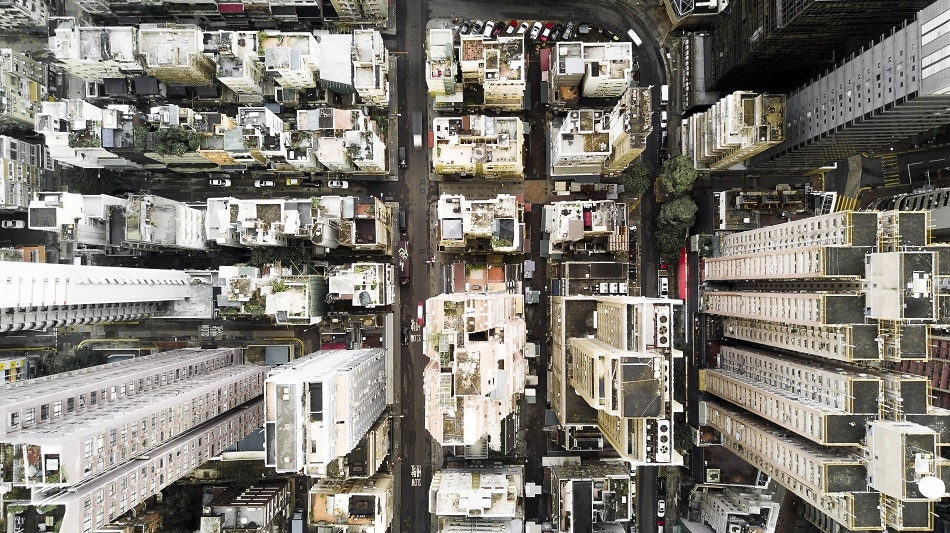
Image credit: Nikolaj Alexander / Shutterstock.com
Drone technology, often affiliated with swooping shots in the film industry or controversial deployment in military strategies, is getting a new lease of life in the fight against climate change.
When we see drone footage we are often caught up in the beauty and awe of a birds-eye perspective of nature and the landscape. Now, using the same application there are various schemes taking flight to monitor the planet and the impact humans are having on the environment.
Drones can not only be used to capture clear images of the Earth’s surface from above but also the technology can be used to collect additional data such as surface temperatures and other activity when equipped with special cameras and sensors.
PhD Student at MIT, Norhan Bayomi, is one such individual incorporating drone technology into her field research, studying how the low-income population of cities are affected by building construction and the layout of certain neighborhoods.
Bayomi is highlighting how these factors directly impact the residents that are vulnerable to rising temperatures and recently conducted field research in her hometown of Cairo, Egypt. She uses drones equipped with infrared cameras to record the surface temperature as well as gathering data on living conditions, building design and materials, and the surrounding conditions of an urban area.
“We’re trying to incorporate this kind of technology to understand what kind of adaptation strategies are suitable for addressing climate change, especially for underserved populations,” said Bayomi.
Bayomi’s research offers an eye-opening case in point to one of the worst elements of the current climate crisis, that those most exposed to its affects lack immediate access to the materials or funds needed to protect themselves.
MIT Climate Changed Ideas Competition: WAVE of Change [FINALIST]
This is coupled with the fact that often those living in reduced circumstances face a plethora of additional issues such as little to no air conditioning, small living spaces, and poor insulation. One of the very real issues is that if global temperatures continue to soar, we will see those with few resources at risk of being displaced from their communities leading to an increase in the number of climate refugees.
Therefore, Bayomi is driving to shed new light on the influence of the climate crisis in conjunction with pre-existing conditions for low-income communities, she stated, “I’m trying to incorporate how the building affects indoor conditions, what resources are available to urban residents, and how they adapt to heat exposure — for instance, if they have a cooling space they could go to, or if there is a problem with the power supplies and they don’t have access to ceiling fans.”
Bayomi’s aim is to carefully analyze conditions residents are under and how, or if they can adapt with environmental changes, “to see how they would affect risk in the future,” she added. This is being made possible due the development of a computational model that analyses the risk of rising temperatures, functionality and efficiency of buildings, in addition to the capacity for communities to adapt and access useful resources. What’s more is Bayomi is also transferring her method from her Cairo research and applying it to the study of low-income communities in the Bronx, New York.
Elsewhere, other avenues are being explored using drones to mitigate the impact of the climate crisis and combat climate change. These include using drones to monitor forests in an attempt to boost conservation efforts in at-risk areas, one such project, known as Deep Forest, is already underway in Costa Rica. There the aim is to monitor and track tree degradation as well as the impact of illegal logging – deforestation is currently responsible for 15% of global carbon emissions, more than the sum total of all the cars and trucks on the road today, globally.
Scientists can also use drone technology to monitor the erosion of coastal lines as well as surface reflectivity. These methods can provide constructive data on whether the surface is absorbing or reflecting the sunlight which in turn can tell researchers whether there is a cooling or heating effect in occurrence.
Drones are also effective tools for forward thinking companies in the monitoring of construction sites, energy utility companies, and also transport logistics. Drones can assist site managers and operations teams in the streamlining of their processes to cut industry emissions and therefore, cut costs.
So it goes, aside from the common applications related to drone technology whether that be military, the film industry, or a local hobbyist keen on technology, drones can be successfully utilized in investigating and combating climate change. Something very much at the forefront of the planetary collective consciousness as individuals, activist groups, governments, and progressive corporations aim to address the immediate threat the climate emergency possesses.
Disclaimer: The views expressed here are those of the author expressed in their private capacity and do not necessarily represent the views of AZoM.com Limited T/A AZoNetwork the owner and operator of this website. This disclaimer forms part of the Terms and conditions of use of this website.